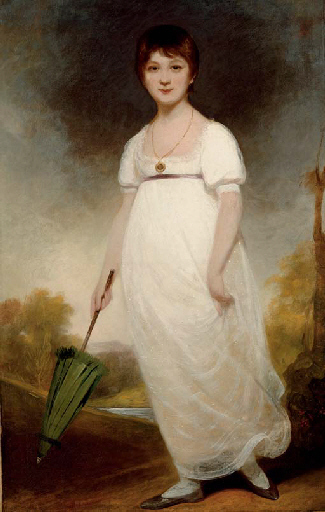The unseen Jane Austen?

© Paula Byrne
Is this Jane Austen? On Boxing Day at 9pm, BBC2 broadcasts Jane Austen: The unseen portrait?, in which the biographer and Austen scholar Paula Byrne suggests, with the support of art historians and costume experts, that it is.
Other authorities on Austen have suggested that this could be an "imaginary portrait" or a "memorial portrait" of the novelist, but Byrne can counter such objections:
"Despite asking numerous experts, I have not found any examples of early nineteenth-century 'imaginary portraits' of contemporary writers. There are indeed 'memorial portraits' (Joseph Severn of Keats, many images of celebrities such as Byron and Nelson), but they are always derived, directly or indirectly, from life portraits. If this is a 'memorial portrait', where is the life portrait from which it is derived? Rather than supposing that two portraits of Austen have been out of view for nearly 200 years, I prefer, till counter-evidence comes forward, to accept the consensus of the art historians and costume experts in my film where the portrait is dated to 1814 or 1815, when Austen was at the height of her powers."
As it happens, this claim comes at a moment when Austen has made the news for other reasons, whether it's the widening of access to Austen family archives, archaeological investigations in Steventon, or the announcement that Joanna Trollope is to essay a "contemporary version" of Sense and Sensibility.
But if Byrne's "unseen" Austen portrait is authentic – and you'll have to wait until after Christmas to hear the full range of evidence and speculation – then it also provides an interesting sequel to the saga of the much-disputed Rice Portrait, which once graced the cover of the TLS and inspired a debate that, I hope, we'll be able to publish online as a TLS Argument in the new year:

The Rice Portrait depicts a young woman who, in Claudia L. Johnson's words, seems "spirited, ironic and disarmingly self-confident, altogether capable of sitting in her corner of the common parlour and laughing at the world, as Virginia Woolf imagined on reading Love and Freindship". It's been suggested that the painting shows Austen around the age of fourteen – ie, circa 1789. By contrast, Byrne's Austen, a couple of decades later, has the prominent family nose, a pen in her hand, and a church very respectably visible in the background. The cat on the table politely declines to disturb the author as she drafts a chapter of Emma. Perhaps the one in which Harriet Smith sits for her portrait.
Of course, it is unlikely that everybody will immediately be persuaded of the portrait's authenticity after seeing Jane Austen: The unseen portrait?, since, as Johnson suggested more than a decade ago, the image of such a "national treasure" inevitably seems to elicit responses derived from deep-seated cultural sensitivities (cf. representations of that other elusive scribbler, William Shakespeare). In Austen's case, there is the familiar representation of her, in a watercolour by her sister Cassandra, that Byrne has dismissed as "very Victorian, sentimentalised and saccharine".
Take that, orthodoxy! (And let battle commence . . . .)
Peter Stothard's Blog
- Peter Stothard's profile
- 30 followers



